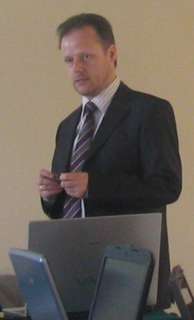Jerzy Czopik wrote:
You must understand the main difference between bilingual files created in Word, which would create a bak file when cleaned, and the process in Studio.
While bilingual Word files remain doc files, where both source (specially formatted) and target text is saved in the same file without changing the data format (ie a doc file remains a doc), SDL Studio does use a special format for saving bilingual data from any source format.
To put things straight: working with Studio means always creating a new special file for translation, where the source and target are kept within a dedicated data structure.
How the whole process works:
Let us leave terminology aside for the beginning in order not to make things to complicated.
As you are using a CAT program, you aim on creating a translation memory.
So the translation process starts with an empty translation memory and a source file. You open the source file in Studio and assign a translation memory. After the file has been opened you press the "Save" button. What you have now is a file in SDLXLIFF format, an intermediate format for translation. The original source file however remains untouched on your HDD. After the translation is done you have: a translation memory containing the text from the translated file in source and with corresponding target sentences AND a translated bilingual file in SDLXLIFF format. This one would have been the "BAK" you mention. However, only user of Studio can have some use of it. For user of old Trados 2007 it is worthless. You can now create a target file and also export the content of the translation memory to an exchange format called TMX.
Now in order to make your customer happy (and yourself too by not adding any additional work to what you've done already) you can provide him the target file and the translation memory export as TMX. Should they moan, you would unfortunately need to retranslate the file. Before you do that, ask them, if they would accept a TTX bilingual file - in that case your additional work will not be very hard. If the answer is yes, please:
- start Workbench
- create a translation memory with the necessary language pair
- start Tageditor (SDL International programm group, there inside is TagEditor - a separate small program)
- with the command "File - open" open the source file (bear in mind, that Tageditor is by default looking for *.ttx files, so you need to change the file type for "all files *.*) there (best solution) to be able to open any file); you can also use drag&drop and drag the file on the Tageditor window and drop it there
- now in Tageditor press CTRL+S in order to save the file; this will result in a *.ttx file
- go to Studio
- with File - Open open the newly created ttx file, assign the same translation memory you used before and retranslate the file
- now with "Save target as..." create the final ttx AND the target file
so far you're done
Should they insist in Word, repeat the creation of a new translation memory in Workbench. In Studio export the content of your TM to a tmx file. In Workbench import this content to your empty TM you just created (menu File - Import).
Start Word and retranslate the file there. Have fun















